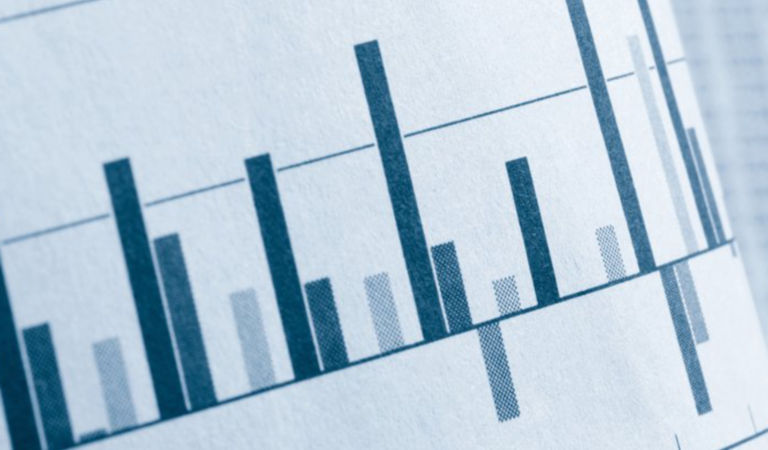US
US equities (-5.2%) suffered their largest monthly decline since March 2020. Despite accommodative financial conditions and robust equity inflows, stocks were pressured by the Fed’s hawkish policy pivot, persistently high inflation, uncertainty about additional fiscal stimulus, and concerns about a potential peak in corporate profit margins. Equity markets slumped and US Treasury yields surged after the minutes from the Fed’s December meeting signaled a faster balance-sheet runoff and a more aggressive rate-tightening schedule. This hawkish shift sparked a severe sell-off in technology stocks, leading value stocks to significantly outperform their growth counterparts for the second consecutive month. Inflation continued to soar in December, with the Consumer Price Index (CPI) climbing to 7% annually at the headline level and 5.5% at the core level. A sizable boost in inventories and robust consumer and business spending helped US GDP to expand at a 6.9% annualized rate in the fourth quarter, well above forecasts of 5.5% and significantly exceeding the 2.3% growth rate in the third quarter. Of the 33% of companies in the S&P 500 Index that have reported fourth-quarter earnings results, 77% have reported earnings that exceeded forecasts. In aggregate, earnings were 4.0% above estimates but below the five-year average of 8.6%. The blended net profit margin for the index slipped to 12.0%, from 12.9% in the third quarter, while the blended year-over-year earnings growth rate for the index was 24.3%. The forward 12-month price-to-earnings ratio stood at 19.2.
US economic data released in January was mixed. Ongoing improvements in the labor market bolstered the prospect of a March rate hike, with Fed Chair Jerome Powell indicating that job market conditions are consistent with maximum employment. In December, the unemployment rate dipped to 3.9%, from 4.2%; wages grew at a brisk 4.7% annual pace; and nonfarm payrolls increased by 199,000. The Employment Cost Index — a broad gauge of wages and benefits — advanced 1% in the fourth quarter (4.0% annually) following a record 1.3% increase in the third quarter, underscoring how the tight labor market continues to exacerbate wage pressures. Consumer spending moderated in December amid higher inflation and surging Omicron cases. In December, retail sales fell by 1.9%, considerably worse than forecasts of a 0.1% drop, while inflation-adjusted purchases of goods and services slipped 1%. Personal consumption expenditures — the Fed’s preferred measure of inflation — advanced at the fastest rate since 1982, rising 0.4% in December and 5.8% annually. In January, the Conference Board’s index of consumer confidence slipped for the first time in four months on less optimistic expectations for the economy and labor market, although the modest 1.4-point decline in the index was better than forecasts. Despite robust demand, the housing market faced headwinds from lean inventory, rising mortgage rates, and sharply higher prices for homes and building materials. In December, new-home sales and housing construction rose to a nine-month high, while existing- and pending-home sales slipped.
The US manufacturing expansion eased modestly in January, as the Institute of Supply Management (ISM) Manufacturing Index dipped to 57.6, from 58.8, amid strains from Omicron and accelerating materials costs. The services sector abruptly slowed in December after hitting a record high in November, with the ISM Services Index dropping to 62.0, from 69.1. Despite the much weaker-than-expected result, the index remained firmly in expansionary territory and hiring was strong. Preliminary data for January showed that services sector growth continued to falter amid surging Omicron cases, labor shortages, and lingering supply disruptions. However, signs of ebbing supply pressures and robust growth in new business offered hope for a rebound in activity once the Omicron wave recedes. Despite the headwinds from higher inflation and a lack of qualified workers, the National Federation of Independent Business (NFIB) Small Business Optimism Index edged higher, aided by hiring plans, expectations for greater capital outlays, and more optimism about the economic outlook.
Nine of the 11 sectors in the S&P 500 Index (-5.2%) posted negative results. Consumer discretionary (-9.7%) was the worst performer, with internet & direct marketing retail (-10.6%) leading the sector lower. Information technology (-6.9%) was negative, led by semiconductors & semiconductor equipment (-12.3%). Health care (-6.8%) underperformed, most notably the health care equipment & supplies group (-9.8%). Communication services (-6.2%) declined, led by the entertainment (-13.7%) and interactive media & services (-6.8%) groups. Energy (+19.1%) was the best-performing sector during the period, as the price of oil continued to rise. Financials (+0.1%) also posted positive returns, due to the solid performance of the diversified financial services group (+4.7%).
Europe
European equities (-3.1%) declined against a backdrop of rising inflation, expectations for higher interest rates, surging COVID cases and attendant restrictions, and intensifying geopolitical tensions with Russia. Eurozone inflation rose at a record-high annual rate of 5.0% in December, driven by soaring energy and food prices and supply-chain disruptions. The figure exceeded economists’ forecasts of 4.7% and cast doubt on the European Central Bank’s (ECB’s) assertion that inflation pressures would ease in 2022 without the need for higher interest rates. Rising inflation and the spiraling number of COVID cases caused eurozone consumer confidence in January to decline for the fourth straight month, while economic sentiment in the region fell to a nine-month low amid declining confidence across all sectors. The eurozone unemployment rate ebbed to 7% in December, nearing pre-COVID levels, as the labor market continued to recover despite headwinds from the pandemic. Differing agendas and divisions between European nations stood in the way of a coordinated Western response to Russian aggression against Ukraine.
The expansion in Europe’s manufacturing sector regained momentum in January, as the eurozone Manufacturing Purchasing Managers’ Index (PMI) rose to 58.7 in January, from 58.0, amid stronger growth in production, new orders, and employment. Factories benefited from slower input price inflation and signs that supply-chain pressures were beginning to ease, even though lead times remained stretched for many critical inputs. Preliminary data for January showed that the services sector slowed sharply for the second consecutive month, as renewed COVID restrictions and rising prices weighed heavily on tourism, travel, and recreation.
In the UK (+1.9%), the Bank of England (BOE) grappled with rampant inflation, signaling the likelihood of additional rate hikes. Inflation soared to its highest level since 1982, reaching 5.4% in December amid resurgent demand, higher energy costs, and supply delays. Allegations about a number of lockdown-breaching gatherings in government buildings sparked calls for Prime Minister Boris Johnson’s resignation.
In Italy (-1.0%), preliminary results showed that GDP grew 0.6% in the fourth quarter and 6.5% in 2021. Prime Minister Mario Draghi’s prospect of becoming the next Italian president waned on fears that his appointment could jeopardize the country’s ambitious reform agenda and potentially weaken the government or even cause a collapse in the ruling coalition. In France (-2.4%), GDP exceeded forecasts, rising 0.7% in the fourth quarter and 7.0% for the year — the strongest annual growth in over 50 years. Germany’s (-2.3%) economy teetered on the brink of recession, as GDP contracted 0.7% in the last quarter of 2021.
Pacific basin
Pacific Basin equities (-4.6%) were led lower by New Zealand (-11.2%), which declined for the fourth consecutive month. Inflation accelerated at the fastest rate in more than 31 years, as higher housing materials prices, rental rates, and petrol costs drove consumer prices up 5.9% annually in the fourth quarter, from 4.9% in the third quarter. This result, along with a tight labor market, fueled expectations that the central bank would raise its official cash rate for the third time in five months to cool the overheating economy and keep inflation within the bank’s target range of 1% – 3%.
In Australia (-5.8%), a record high number of COVID cases and mounting hospitalization rates severely strained the labor market, forcing authorities to relax quarantine rules for some workers. Retail sales plunged 4.4% in December after an outsized gain of 7.3% in November, as COVID dampened mobility and consumer spending. Prior to Omicron, 64,800 jobs were gained in December, while the unemployment rate dipped to 4.2% — the lowest since 2008. Rising fuel prices, supply issues, materials shortages, and strong demand drove annual inflation to 3.5% in the fourth quarter, above expectations of 3.2%. Consumer confidence slipped on waning expectations for the economy and personal finances. The central bank kept its official cash rate unchanged at a record low of 0.10% but announced that it will end its quantitative easing program in February. The bank’s more upbeat economic outlook prompted markets to anticipate a May rate hike.
Japan’s (-5.0%) daily COVID case count was at record levels in January, as the Omicron variant proliferated in metropolitan areas. Industrial production fell 1.0% in December after a 7.0% increase in November, with the larger-than-expected drop in output attributed to a rising number of COVID infections and associated labor shortages. Pandemic strains and supply problems forced Japanese automakers to slash production targets in January, while restrictions imposed on restaurants to curb the virus were a key driver of a 1.0% drop in retail sales in December. The unemployment rate in December unexpectedly fell to 2.7%, signaling that the job market continued to recover. The Bank of Japan (BOJ) pledged to maintain its ultra-accommodative monetary policy, hoping that corporate profits and a stronger economy would translate to higher prices and wages. The BOJ revised its inflation forecast upward from 0.9% to 1.1% for the fiscal year starting in April, while inflation rose 0.5% year over year in December, matching November’s gain.
Emerging markets
Emerging markets (EM) equities (-1.8%) declined amid concerns about rising inflation, higher interest rates, and escalating global geopolitical tensions. Within EM, Latin America was the top performer, followed by Europe, the Middle East, and Africa (EMEA) and Asia.
Latin American equities (+4.1%) accelerated in January. Higher commodity prices and incrementally positive political developments aided Peru (+11.8%), Brazil (+7.8%), and Colombia (+7.1%). Recent political shockwaves in Peru eased after the impeachment case against President Pedro Castillo was suspended. In Brazil, economic activity was more resilient than anticipated, while Luiz Inácio Lula da Silva, who is perceived as a more moderate presidential candidate, held a commanding lead over Jair Bolsonaro in the 2022 election polls. In Colombia, there was consolidation in the center-left coalition ahead of the 2022 presidential elections. Chile (+5.5%) rallied following the appointment of a moderate finance minister, Mario Marcel. Mexico (-4.4%) declined in tandem with US equities, as the country faced a rapid acceleration in the number of COVID-19 cases.
EMEA (+2.5%) produced mixed returns. Hungary (+7.1%) rebounded sharply, while the Czech Republic (-0.2%) and Poland (-1.6%) ended the month in negative territory amid a sharp spike in inflation. In Turkey (+6.7%), intervention by the central bank and the government’s exchange-rate-protected deposit program helped to stabilize the lira. President Recep Tayyip Erdoğan extended the program to companies, hoping that it would combine with growing exports, investments, and employment to bring down rampant inflation. However, many economists remained skeptical that the scheme will provide a lasting solution to the country’s currency dilemma. Inflation surged to its highest level in decades, as CPI climbed to 36% in December, exacerbating public discontent about the soaring cost of living and eroding support for the government. Russia (-6.1%) fell sharply, as geopolitical tensions with the West remained acute following the buildup of Russian military forces on the Ukraine border. Higher energy prices provided a tailwind for the economy and helped to offset the negative impact of higher interest rates on consumer demand. South Africa (+3.5%) advanced amid higher commodity prices.
Asian equities (-3.1%) settled lower. In the Philippines (+4.0%), fourth-quarter GDP grew at a surprisingly strong rate of 7.7% year over year, as loosened pandemic-related restrictions buoyed business activity and household consumption. Surging cases of the Omicron variant prompted some new restrictions, although the measures are anticipated be short-lived. South Korea (-8.9%) suffered from a sharp sell-off in technology stocks. Manufacturing accelerated in December, but waning export demand compounded by supply shortages and cost pressures posed headwinds to industrial activity. Taiwan (-1.4%) and India (-1.0%) slipped on weakness in technology stocks. China (-2.9%) continued to shift toward a more accommodative policy stance to combat slowing economic growth, property market strains, subdued consumer sentiment, and weak domestic consumption. The government’s fight to contain outbreaks of the Omicron variant led to lockdowns and restrictions in several major cities, causing congestion at ports and exacerbating global supply-chain pressures. While a significantly more supportive monetary policy outlook could provide impetus for the economy, China’s zero-COVID policy could constrain economic growth.
Fixed income
Markets were volatile in January against a backdrop of hawkish tilts in major central banks’ rhetoric, mixed global macroeconomic data, persistent inflation, and geopolitical uncertainty surrounding the Russia-NATO conflict. Most fixed income sectors uncharacteristically underperformed in conjunction with an increase in sovereign yields.
US economic data releases were mixed. Headline CPI reached a near 40-year high, dragging the University of Michigan’s gauge of consumer sentiment down to a 10-year low. Annualized GDP rose above expectations in the fourth quarter, boosted by holiday spending and a large increase in inventories thanks to easing supply-chain pressures. The NFIB Small Business Optimism Index improved slightly, although inflation remained a top concern. The unemployment rate declined to a pandemic low, underpinned by strong wage growth, while nonfarm payrolls growth disappointed amid persistent labor shortages. The US composite PMI slipped, and regional manufacturing indices posted mixed results, as the rapid spread of the Omicron variant impacted employment gauges. Multi-family construction lifted housing starts to a nine-month high. Mortgage applications reflected a decline in refinancing activity, while new-home sales improved. The eurozone’s manufacturing PMI rose, as factory activity benefited from moderating supply-chain pressures. However, the services PMI slumped amid renewed pandemic-related restrictions. Investor optimism in Germany improved. The rapid spread of the Omicron variant in the UK adversely impacted manufacturing orders, consumer-facing companies, and retail sales. In China, pricing pressures eased and industrial production improved, aided by stronger auto production. Japan’s manufacturing PMI trailed estimates amid ongoing cost pressures. In Australia, higher fuel and housing costs lifted inflation.
The minutes of December’s Federal Open Market Committee meeting pointed to an earlier and faster pace of rate hikes, while Fed Chair Powell struck a hawkish tone, signaling a March interest-rate hike. The People’s Bank of China (PBOC) cut two key interest rates for the first time since March 2020. The BOJ raised its 2022 growth and inflation forecasts, and the Bank of Canada signaled rate hikes in the near future.
Most global sovereign yields rose markedly, in line with the hawkish tone of major central banks. US Treasury yields rose, particularly in the front end of the curve, reflecting the Fed’s more aggressive monetary policy stance and expectations of a March rate hike. In Europe, UK gilt yields rose, with the country’s annual inflation rate increasing to a 30-year high. German bund yields finished the month in positive territory for the first time since May 2019. Italian government bonds (BTPs) were a relative outperformer, as political concerns eased with the reappointment of President Sergio Mattarella. EM yield movements were less uniform. Chinese yields declined after the PBOC eased monetary policy, while ongoing geopolitical anxiety drove Russian yields higher. The Bloomberg TIPS index returned -2.02% on a total return basis, and the 10-year breakeven inflation rate decreased by 11 basis points, to 2.49% during the month.
Global credit bonds underperformed duration-equivalent government bonds as spreads widened. Within the securitized sectors, agency mortgage-backed securities and commercial mortgage-backed securities underperformed, while asset-backed securities outperformed duration-equivalent government bonds. Within EM, local markets debt (-0.01%) outperformed external debt (-2.85%), in US-dollar terms. Spread widening detracted from results within external debt, and an increase in US Treasury yields also had a negative impact. Movement in EM rates drove negative performance in local markets, while currency appreciation benefited performance.
Currencies
The US dollar appreciated against most major currencies, as markets priced in a more aggressive series of rate hikes by the Fed. Trade- and commodity-linked currencies, including the Australian dollar, Swedish krona, and New Zealand dollar underperformed amid broad strength in the US dollar following indications that the Fed would tighten monetary policy at a faster pace. The Norwegian krone also fell despite surging oil prices. In EM, Latin American and select currencies in Central and Eastern Europe, the Middle East, and Africa were boosted by higher commodity prices and expectations of tighter monetary policy. In line with elevated copper prices, the Chilean peso generated strong gains, as a decline in the country’s unemployment rate reinforced beliefs that the central bank would likely maintain a hawkish tone.
Commodities
Commodities (+11.6%) ended the month higher, with three out of four sectors generating positive returns. Energy (+18.4%) surged higher on robust demand and tightening supplies across global markets. Natural gas (+40.5%) rallied, as a strong winter storm in the US Northeast and colder weather amplified concerns about supply shortages. Crude oil (+16.8%) led the petroleum distillates higher, supporting heating oil (+18.8%), gas oil (18.7%), and gasoline (+14.3%).
Precious metals (-2.1%) was the sole detractor among commodity sectors. Silver (-4.1%) and gold (-1.9%) declined, as the dollar strengthened after the Fed shifted to a more aggressive approach to rein in inflation.
Industrial metals (+2.6%) finished higher. Nickel (+8.7%) led the sector amid lingering concerns about a historic supply squeeze that drove stockpiles in London Metal Exchange warehouses to their lowest levels since December 2019. Aluminum (+7.9%) prices continued to benefit from constrained production as a result of energy shortages, while zinc (+1.4%) advanced on the back of supply tightness. Meanwhile, copper (-2.0%) closed in negative territory amid rising concerns about global economic growth following indications that the Fed will take more aggressive steps to fight inflation. Lead (-2.7%) ended lower after six consecutive weekly declines.
Agriculture & livestock (+3.8%) generated solid gains. Cotton (+13.3%) was bolstered by persistent supply-chain issues and a lack of empty containers and ships to transport the commodity. Soybeans (+11.3%) registered their biggest monthly gain in over a year, as South America’s harvest continued to shrink due to adverse weather. A lack of rain in South America jeopardized corn (+5.5%) crops, driving prices to their highest in six months. Coffee (+4.0%) extended recent gains following droughts and once-in-a-generation frosts that damaged crops in Brazil — the world’s top producer. Cocoa (0.3%) rebounded on renewed demand optimism. Lean hogs (+7.9%) surged, while feeder cattle (-4.1%) declined amid the ongoing backlog of cows in feed lots. Live cattle (0.4%) finished flat. Wheat (-1.7%) pulled back as traders awaited clearer signals on whether tensions between Russia and Ukraine could disrupt supplies from this key export region. Sugar (-3.5%) remained one of the few commodities that missed out on the recent bullish trend for the sector. Output in key grower India is forecast to rise by approximately 3% this season, while European yields have been strong.


























Monthly Market Review — November 2025
Continue readingBy